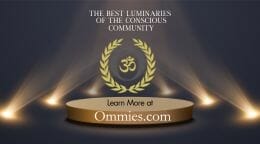Egypt: The Sphinx and the People’s Revolution
The people’s revolution is on the march; When the freedom-loving people march — when the farmers have an opportunity to buy land at reasonable prices and sell the produce of their land through their own organizations, when workers have the opportunity to form unions and bargain through them collectively, and when the children of all the people have an opportunity to attend schools which teach them truths of the real world in which they live — when these opportunities are open to everyone, then the world moves straight ahead… The people are on the march toward ever fuller freedom, toward manifesting here on earth the dignity that is in every human soul. Henry A. Wallace, Vice-President of the United States setting out US war aims in June 1942.
The wave of the people’s revolution has swept over Tunisia and pushed President Ben Ali to exile in Saudi Arabia. The disintegration of Ben Ali’s government and power base has been closely watched in the Arab world. Although Ben Ali was not particularly liked by his neighbours, political leaders in Egypt, Libya, Algeria, Morocco, Syria and Jordan can see the parallel without too much difficulty — a heavy-handed security state with diminishing popular support and growing demands from an educated, yet frustrated population. Recent demonstrations in Algeria and Jordan set off by higher food prices have been met by some government action to limit taxes on food. However, higher food prices are only one sign of broader socio-economic weaknesses that have led to high unemployment, high rents and yet a housing shortage.
It is in Egypt that, following the Tunisian example, people have taken to the streets demanding that President Hosni Moubarak must go. The cries of the Tunisian revolutionary movement “Liberty-Work-Dignity” have been taken up by other peoples. Throughout the Arab world, governments have been unable or unwilling to open serious discussions on socio-economic policies and alternatives. Islamic-based groups have played some role in focusing protests but have not done much in presenting realistic alternative policies. The violence of some of the Islamic groups in some countries has served as a pretext for the governments to ban all policy discussions without too many protests from Western governments.
The repressive forces of the State are stronger in Egypt than in Tunisia where there was a division of policy between the less-politically-structured army and the more pro- Ben Ali police and palace guard. In Egypt, there are some 340,000 in the Army and probably as many in the domestic security services — police, riot police, numerous intelligence services. They receive their relatively high wages thanks to US government “aid” of $1.3 billion a year, Egypt being the second highest recipient of US funds after Israel.
In addition, there is a bloated civil service whose well-being depends on their government jobs. What one does not know is if the army is willing to say “We want to protect our prerogatives but we are willing to jettison Hosni Mubarak.”
For the moment, the military and security services have come on the street in full force with heavy tanks and fighter planes overhead. Two generals have been named to the “inner circle” — one as Vice-President, a post unfilled in the past, and one as Prime Minister. What the army will do is unclear. There is no armed insurgency against the government. There have only been non-violent protests. The army can prevent street demonstrations but they cannot force people to work.
A potential opposition leader, Mohamed El Baradei, the former director of the UN International Atomic Energy Agency is on the scene calling for Mubarak to step down to be replaced by a transitional government until elections can be called.
The Sphinx watches over the scene with the trace of a smile. Most of the tourists who usually crowd around are trying to leave the country, and few are arriving until they see what will happen politically.
The Sphinx was the manifestation of an esoteric philosophy cast in stone. The philosophy stressed the unity of the body, the heart — a symbol of the emotions but also intuition — and the Spirit. The ways of integrating body-heart- and Spirit was taught to small groups by spiritual teachers. The Sphinx was the doctrine set in stone as words were not the main aspect of the teaching. Knowledge and the aims of action were to come from within each individual.
Likewise, the people’s revolution will not come from without. It will arise from the body-heart-spirit of the Egyptian people. What we see today may be only the first wave, but as an old civilization, the Egyptians have learned to wait. But the people’s revolution is on the march, and the period of military control is likely to be short.
Rene Wadlow is the President of the Association of World Citizens, located in Geneva, Switzerland.



